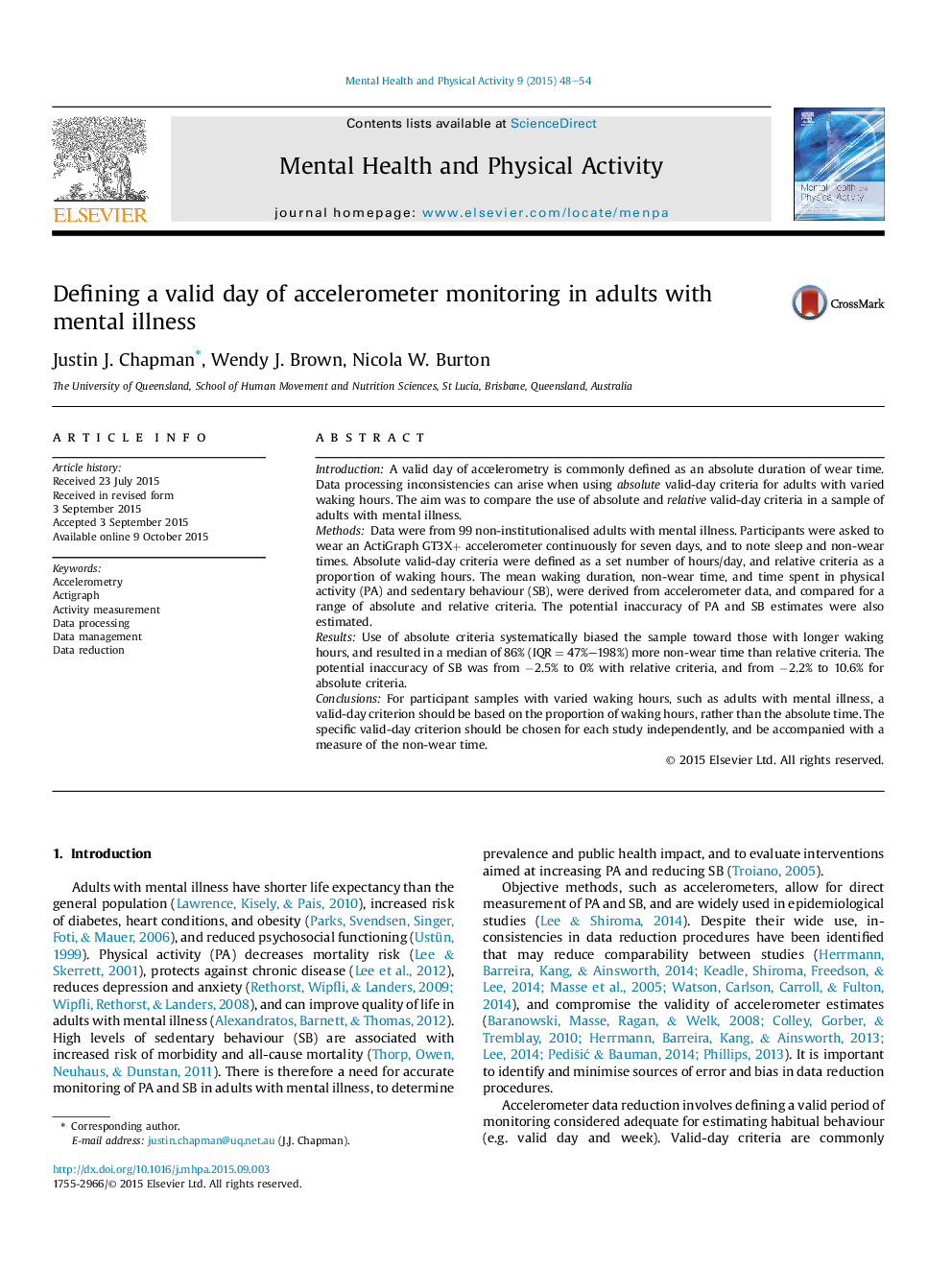| کد مقاله | کد نشریه | سال انتشار | مقاله انگلیسی | نسخه تمام متن |
|---|---|---|---|---|
| 913519 | 1473228 | 2015 | 7 صفحه PDF | دانلود رایگان |
• Absolute valid-day criteria bias the participant sample toward those with longer waking hours.
• Algorithmically-identified non-wear time is greater when using absolute criteria.
• Valid-day criterion should be defined relatively, as a proportion of waking hours.
IntroductionA valid day of accelerometry is commonly defined as an absolute duration of wear time. Data processing inconsistencies can arise when using absolute valid-day criteria for adults with varied waking hours. The aim was to compare the use of absolute and relative valid-day criteria in a sample of adults with mental illness.MethodsData were from 99 non-institutionalised adults with mental illness. Participants were asked to wear an ActiGraph GT3X+ accelerometer continuously for seven days, and to note sleep and non-wear times. Absolute valid-day criteria were defined as a set number of hours/day, and relative criteria as a proportion of waking hours. The mean waking duration, non-wear time, and time spent in physical activity (PA) and sedentary behaviour (SB), were derived from accelerometer data, and compared for a range of absolute and relative criteria. The potential inaccuracy of PA and SB estimates were also estimated.ResultsUse of absolute criteria systematically biased the sample toward those with longer waking hours, and resulted in a median of 86% (IQR = 47%–198%) more non-wear time than relative criteria. The potential inaccuracy of SB was from −2.5% to 0% with relative criteria, and from −2.2% to 10.6% for absolute criteria.ConclusionsFor participant samples with varied waking hours, such as adults with mental illness, a valid-day criterion should be based on the proportion of waking hours, rather than the absolute time. The specific valid-day criterion should be chosen for each study independently, and be accompanied with a measure of the non-wear time.
Journal: Mental Health and Physical Activity - Volume 9, October 2015, Pages 48–54
